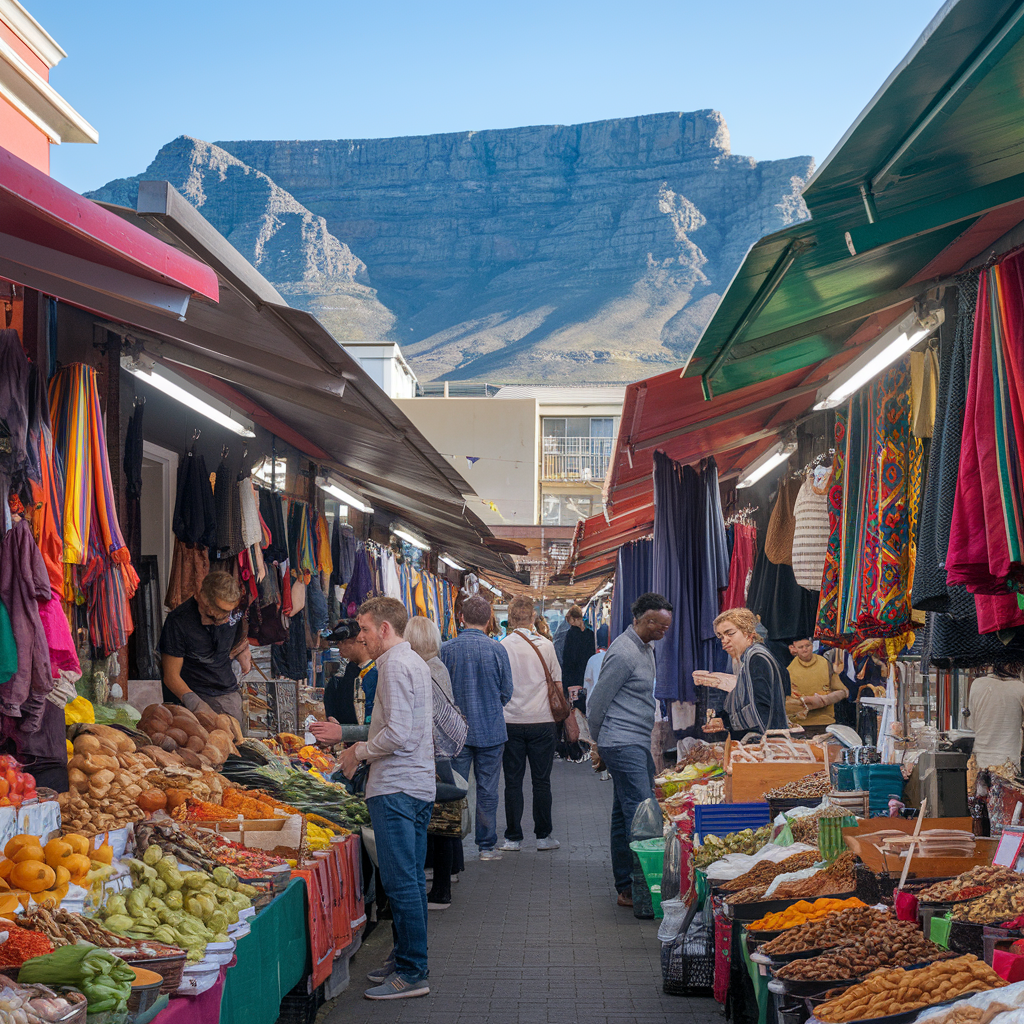The first time I set foot in Cape Town, I was convinced the mountain was staring right at me. Table Mountain, to be precise. The cabbie next to me shot a grin and said, 'Lekker view, bru!'—and just like that, I knew I was in for a trip beyond the ordinary. Cape Town isn’t just a checklist of sights; it’s a mingling of stories, flavors, and contradictions. Buckle up as I share my warts-and-all take on what makes the Mother City irresistibly unpredictable.
Weather, Wonders, and When to Go (a.k.a. Cape Town’s Mood Swings)
If there’s one thing I’ve learned from exploring Cape Town, it’s that the city’s personality changes with the weather. Locals call it “The Mother City” for good reason—she can be nurturing, wild, unpredictable, and always full of surprises. Cape Town weather and climate are defined by a classic Mediterranean rhythm: dry, sun-soaked summers and cool, rain-dappled winters. Each season brings its own flavor of adventure, and as Katie Jackson puts it:
‘There’s no bad season in Cape Town—just different adventures waiting to happen.’
Summer (December–March): Sun, Surf, and City Buzz
Cape Town’s summer is pure magic. From late December through March, the days are long, bright, and reliably warm, with highs in the mid-80s°F (around 29°C). This is when the city truly comes alive. Beaches like Camps Bay and Clifton are packed, the Atlantic sparkles, and the air buzzes with festivals and open-air concerts. It’s the best time for Cape Town outdoor activities—think surfing at Muizenberg, sunset cocktails at Café Caprice, and hiking up Lion’s Head.
- Table Mountain cable car: Clear skies mean panoramic views—just get there early to beat the crowds.
- Table Mountain hike: Start early to avoid midday heat and bring plenty of water.
Winter (June–September): Moody Skies and Whale Watching
Winter in Cape Town is a different story. Temperatures drop to the mid-50s°F (about 13°C), and June averages 14 rainy days. But don’t let the clouds fool you—this is when the city slows down and reveals a quieter side. Fewer tourists mean better deals on hotels and tours, and the moody weather makes for dramatic photos, especially when Table Mountain wears its famous “tablecloth” of cloud.
- Whale watching Cape Town: June to September is prime time, with southern right whales breaching off the coast. The Hermanus Whale Festival is a must if you’re in town.
- Table Mountain National Park: The misty trails are hauntingly beautiful, but pack a rain jacket and check the cable car status—wind and rain can close it unexpectedly.
Spring & Autumn: Wildflowers, Sharks, and Shoulder-Season Perks
If you’re after fewer crowds but still want great weather, spring (September to early December) and autumn (late March to early June) are ideal. Spring brings a riot of wildflowers to the West Coast and milder temperatures perfect for exploring the city’s markets and gardens. Autumn is famous for great white shark cage diving—an adrenaline rush for the brave.
- Spring wildflower spotting: Head to Kirstenbosch Botanical Gardens or take a drive up the West Coast.
- Autumn adventures: Shark cage diving in Gansbaai, or enjoy the last of the warm days with a Table Mountain hike.
Table Mountain: The City’s Weather Barometer
Table Mountain National Park shapes Cape Town’s skyline and mood. Whether you hike or take the Table Mountain cable car, always check the forecast—weather can shift in minutes, and the mountain often disappears under a thick cloud. But that’s part of the fun. As I’ve discovered, Cape Town’s ever-changing climate means every visit feels brand new.
From Historic Footsteps to Rooftop Cocktails: Making Sense of the City’s Layers
As I walk through Cape Town, it’s impossible not to feel the weight—and the wonder—of its history. Founded in 1652 by the Dutch East India Company, the city’s earliest days were shaped by global trade, colonial ambition, and the meeting of cultures. Today, Cape Town’s historical sites are woven into the city’s everyday life, offering a living, breathing travel guide for anyone curious enough to explore its layers.
Tracing the Past: Robben Island and Beyond
No Cape Town travel guide is complete without a Robben Island tour. Just a one-hour ferry ride from the V&A Waterfront, this UNESCO World Heritage Site is more than just a famous prison—it’s a mosaic of stories. For over 400 years, Robben Island was a place of exile and punishment, most notably for Nelson Mandela, who spent 18 years behind bars here. Touring the prison, hearing former inmates share their experiences, and seeing the penguin sanctuary, I’m reminded that, as local sommelier Luvo Ntezo says:
‘A city is its stories, not its streets. In Cape Town, every stone tells a tale.’
Book your Robben Island tickets in advance; tours fill up quickly, and this is one Cape Town historical site you don’t want to miss.
Color, Culture, and the City Bowl
Back on the mainland, I head to Bo-Kaap, one of the city’s most photogenic and culturally rich neighborhoods. The rows of brightly painted houses aren’t just for Instagram—they’re a living symbol of Cape Malay heritage and resilience. Walking the cobbled streets, I hear a mix of languages and smell spices drifting from family kitchens. For a true local stay, La Rose Bed & Breakfast offers a warm welcome and a taste of Cape Town’s multicultural heart.
A short stroll brings me to the City Bowl, the vibrant downtown core. Here, Dutch colonial buildings line Long Street, and the canal district offers everything from paddleboarding to bustling markets. This is where Cape Town’s layers—historic, modern, and multicultural—blend seamlessly.
Cape Town Cultural Experiences: Food, Markets, and Nightlife
Cape Town’s energy doesn’t fade with the sun. As evening falls, I join locals for a braai (South African barbecue) at Mojo Market, sampling everything from Xhosa-inspired dishes to global street food. The market’s lively atmosphere is a true reflection of Cape Town cultural experiences—diverse, sociable, and always “lekker.”
For a taste of Cape Town nightlife, I head to Café Caprice in Camps Bay. Sipping a cocktail as the sun sets over the Atlantic, I watch the city shift from golden hour to neon-lit excitement. Whether it’s a rooftop bar or a beachfront hangout, Cape Town nightlife is as layered and inviting as the city itself.
- Don’t miss: Robben Island tour (book ahead!), Bo-Kaap’s colorful streets, paddleboarding in the City Bowl, sunset cocktails at Café Caprice, and a local braai at Mojo Market.
Cape Town’s layers—historic footsteps, multicultural neighborhoods, and vibrant nightlife—invite me to experience the city as both a living museum and a modern playground.
The Art of Indulgence: Where I Slept, Ate, and Shopped Like a Local (or at least tried)
When it comes to Cape Town accommodation options, I quickly learned that where you stay shapes your entire story. My first stop was the 12 Apostles Hotel & Spa (Victoria Rd, Camps Bay, +27 21 4379000). If you want to wake up to a mountain-ocean panorama, this is the place. The spa is pure bliss, and the Leopard Bar’s sunset cocktails are legendary. For a different flavor, I checked into La Rose Bed & Breakfast (32 Rose St, Bo-Kaap, +27 21 422 5883). Run by Adheera Bodasing and Yoann Nicolas, it’s a melting pot of cultures—think Moroccan lamps, South African art, and a breakfast table where you’ll swap stories with travelers from everywhere. As Adheera told me,
‘Cape Town’s best flavor? The feeling of being at a braai with new friends and forgetting what time it is.’
If you’re craving urban resort luxury, One&Only Cape Town (Dock Rd, V&A Waterfront, +27 21 431 5888) delivers with the city’s largest infinity pool, Nobu restaurant, and the innovative Wine Studio—where “reverse pairing” is an experience in itself.
Best Restaurants in Cape Town: Eat Like a Local
Cape Town’s food scene is as diverse as its people. For street eats and live music, Mojo Market (30 Regent Road, Sea Point, +27 21 422 4888) is unbeatable. You’ll find everything from fresh mussels to Cape Town’s only mac ‘n cheese stall. For a true taste of local tradition, Mzansi Restaurant (45 Harlem Ave, Langa, +27 73 754 8502) serves Xhosa dishes buffet-style—don’t miss the chakalaka. If you’re up for a marathon meal, Die Strandloper (Jan Olfsen Str, Langebaan, +27 22 77 22 490) offers a 10-course seafood feast right on the sand. And for sunset cocktails, Café Caprice in Camps Bay is the place to see and be seen.
Cape Town Shopping Destinations: From Tourist Classics to Local Treasures
- V&A Waterfront (19 Dock Rd): Over 450 stores—think Adidas, Armani, Crocs—with Table Mountain views. It’s touristy, but the variety is hard to beat.
- Kalk Bay: About 45 minutes from the city, this seaside village is packed with quirky shops, antiques, and indie bookstores.
- Woodstock Neighbourgoods Market (373 Albert Rd): Saturdays only. Local crafts, artisan foods, and a creative crowd—perfect for unique souvenirs and cheeseboards.
Money & Local Slang: Cape Town Travel Guide Essentials
- Cape Town currency exchange rates: $1 ≈ 14.27 ZAR (always check for updates).
- Tipping: 10% is standard unless already included—always check your bill.
- Local slang: “Lekker” (great), “braai” (barbecue), “bru” (friend). Sprinkle these into your conversations for instant local cred.
Whether I was splurging at a luxury hotel, sampling Xhosa cuisine in Langa, or hunting for treasures in Woodstock, I found that Cape Town’s best indulgence is living like a local—even if only for a few days.
Wild Card Walk: Adventures, Oddities, and the Unexpected
When it comes to things to do in Cape Town, the city’s wild side is where the magic truly happens. Cape Town isn’t just about postcard-perfect views and world-class wine—here, every day is an invitation to step off the beaten path and embrace the unexpected. As I wandered through the Mother City, I quickly learned that adventure and oddity are woven into the fabric of daily life. Or, as Katie Jackson put it,
‘If you’re not a bit surprised by Cape Town, you’re not really seeing it.’
Let’s start with Muizenberg Beach, a spot that’s become synonymous with Cape Town adventure sports. The pastel-painted beach huts are real, and yes, they’re as Instagrammable as you’ve heard. But beyond the photo ops, Muizenberg is a mecca for beginner surfers. I signed up for a lesson with Stoked Surf School, who even offered roundtrip transfers from the city—making it easy to chase waves without worrying about logistics. The water is brisk, the vibe is laid-back, and catching my first wave with Table Mountain in the background was pure exhilaration. It’s one of those Cape Town outdoor activities that’s both accessible and unforgettable.
Next up: Boulder Beach. This is the only place in Africa where you can swim alongside wild African penguins. The experience is surreal—one moment you’re sunbathing, the next you’re sharing the shoreline with tuxedoed locals waddling by. It’s a reminder that unique wildlife encounters are never far away in Cape Town. If you’re looking for a story to tell, this is it.
But adventure here isn’t just about adrenaline or wildlife. For a deeper, more meaningful journey, I joined a guided township tour around the Cape Flats, specifically Imizamo Yethu in Hout Bay. These tours are humbling and eye-opening, offering a raw look at the city’s history and resilience. Meeting local residents, hearing their stories, and seeing community projects firsthand gave me a perspective I couldn’t have found anywhere else. It’s an essential part of Cape Town local tours—one that grounds all the beauty in real context.
Getting around is part of the adventure, too. While the Metrorail South line to Simon’s Town offers scenic views, I learned to be safety-conscious, especially after dark. Instead, I relied on Uber (a ride from downtown to Muizenberg costs about $12) and the MyCiTi bus system, which requires a myconnect card. Apps like MyCiti, Uber, Cape Town Tourism, and VoiceMap became my digital travel toolkit, making navigation seamless and unlocking hidden gems. Just don’t forget your plug adapter—Cape Town uses types C, D, M, and N, and the voltage is 230V. Trust me, tech is your friend here, unless you’re caught with a dead phone and the wrong charger.
From surfing and penguin swims to township tours and tech-powered exploring, Cape Town is a city that rewards curiosity. Every day brings a new surprise, whether it’s a whale breaching off the coast in winter or a spontaneous paddleboarding session through the City Bowl canals. If you’re searching for Cape Town whale watching opportunities or just want to get lost in the city’s vibrant neighborhoods, you’ll find that adventure is never far away. Cape Town’s wild card moments are what make it unforgettable—so embrace the unexpected, and let the city surprise you.
TL;DR: Cape Town is a tapestry of wild views, warm people, and once-in-a-lifetime experiences—from whale watching to historic tours and street food markets. With a bit of planning and a willingness to wander, you’ll find the city opens up in ways no guidebook can fully capture.



